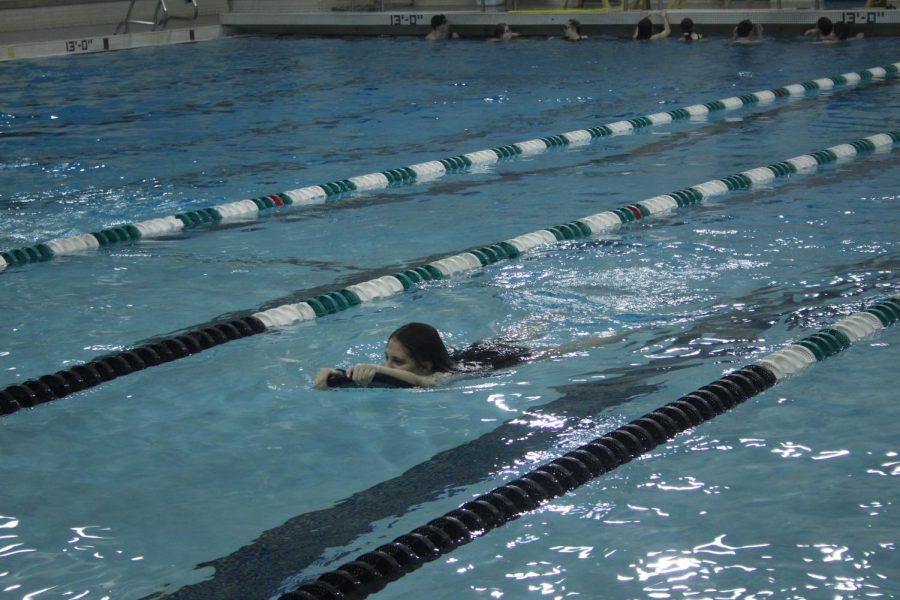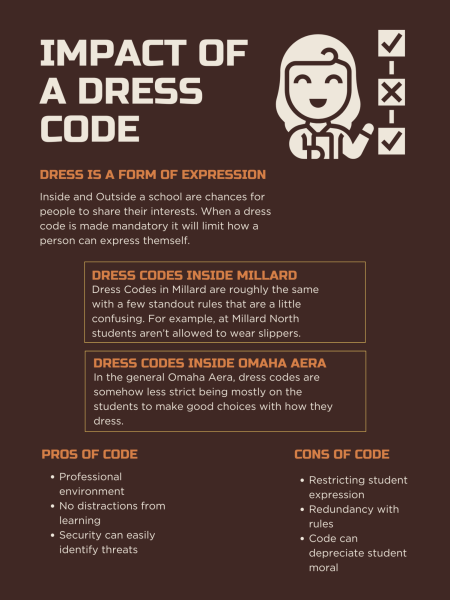Just Keep Swimming
There’s more than just one type of gym class
March 30, 2018
Stroke, stroke, breath. Stroke, stroke breath. I reach out my hand to touch the wall, completing a rigorous, yet refreshing swim.
With the indoor pool comes the option to take a swimming course to fill the physical education graduation requirement. This past year, I took Aquatics, and I would highly recommend it.
I chose this course because swimming had more appeal to me than the traditional gym class. Swimming is a form of exercise I prefer over playing sports like basketball or volleyball, and I enjoyed the opportunity to learn how to use swimming in more than just a recreational way.
Aquatics is a nine week course that fills five out of the 15 required physical education credits, and it is a nice alternative for students who do not enjoy running. To take this class, students must have strong swimming skills and be able to provide their own swimsuit and towel, and all grade levels can participate. Intro to Aquatics is recommended to be taken before Aquatics to help build the required endurance.
The main purpose of Aquatics is to teach students how to use swimming as a form of exercise that they can take with them for the rest of their lives. They are taught how to write swimming workouts with a warm-up, main set and cool down. The first few days of the class, aquatics director Colleen Deacon supplies the work-outs for participants to provide examples of what should be included and how to fill the full swim time.
Most of the nine weeks of the course follow the same basic layout. Each day begins with stretches as a group, and a different student gets a chance to lead stretches everyday. Monday through Wednesday students do the workouts that they wrote for themselves. Thursdays involve cooper swims and timed swims. Cooper swims entail swimming continuously in a stroke of your choice for increments of time that increase by five minutes every two weeks. Timed swims are just that-100 meter, 150 meter and 200 meter swims timed in order to track improvement. Fridays are safety days. Students can partake in a variety of activities, such as water basketball or jumping off the diving board, so long as they are following the pool rules.
This class does a considerable job of teaching students something they will actually use in life. Participants learn how to write anaerobic and aerobic workouts, so have examples of both sprinting and endurance forms of exercise. Some days, workouts are ended early so students can learn important swimming skills such as how to do a flip turn and dive off of the starting blocks.
Throughout the course, Deacon shows short videos, so students can see the benefits of using swimming as a form of exercise. According to Better Health, swimming is a very beneficial form of exercise because it works nearly every muscle in the body. In addition, it improves flexibility, posture, balance and coordination.
According to Healthline, swimming gives your lungs and cardiovascular system a work out and is a low impact sport, making it easy on the joints. Swimming burns large amounts of calories; a 160 pound person swimming for one hour at a moderate pace burns around 423 calories, and if they increased to a fast pace, they could burn up to 715 calories.
Even though the physical activity required of students does work them hard, this class is not at all stressful. There are no fitness test requirements that need to be reached like in the traditional gym classes. That was a major reason this class drew me in. I wanted the opportunity to get good exercise without having to worry about meeting generalized goals. I enjoyed how in this class, I just had to improve my individual abilities over the weeks and not meet a specific time or set number of laps in order to earn a 1. I got to tailor my workouts to my personal desires and abilities.
Aquatics is just an all around fun class. On select days throughout the semester, students get a break from regular workouts to participate in other activities. They play games such as water polo or water volleyball and build teamwork through participating in relays. Writing workouts with the students in your lane was my personal favorite activity. Students are given the chance to take a break from the normal straight-up exercise routine and can choose some more relaxed activities to do with those in your lanes.
The only real downside to this course is the fact that students do get wet everyday. That said, 15-20 minutes everyday after class are designated for time to shower and change. For me, this was more that enough time, but I don’t wear make-up or feel the need to blow-dry my hair. Students may have to sacrifice their perfect school appearances, but I for one think it is worth it.
So when signing up for that next gym class, I highly recommend selecting Aquatics. It is entertaining, low key and offers many health benefits. In order to succeed in this course, students must simply just keep swimming.

















